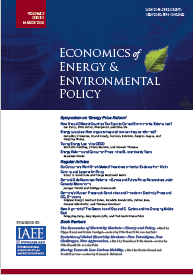How incumbent cultural and cognitive path dependencies constrain the “Scenario Cone”: reliance on carbon dioxide removal due to techno-bias

Scenario analysis is widely used to assess long-term development necessary to reach climate targets. Mitigation measures in these scenarios concentrate on sup- ply-side technology solutions, while little attention has been paid to demand side solutions. One suite of included technologies are carbon dioxide removal technologies (CDR). Most scenarios rely heavily on CDR to limit global warming to 1.5–2°C. Yet, the reliance on CDR is highly controversial, as most CDR technologies remain unproven to date and dramatic adverse side effects seem likely. Using an interdisciplinary approach, we assess why the selection of prominently represented scenarios is narrowed down on such a confined, CDR dependent scenario cone. After critically assessing CDR, based on existing techno-economic literature, we perform a theoretical analysis of the underlying scientific processes and then transfer the resulting insights into the process of scenario development. We base our analysis on various approaches of feminist theory. These approaches allow a reflection and critique of common scientific practice as well as a contextualization of underlying values and norms. We argue that the focus on technological solutions is not an outcome of an open scientific competition of ideas, but due to underlying assumptions based on thought patterns prevalent in western societies. Thus, to provide the chance of a more open and objective debate about possible climate change mitigation measures and pathways we need to reconsider underlying assumptions and biases influencing the scenario building process.